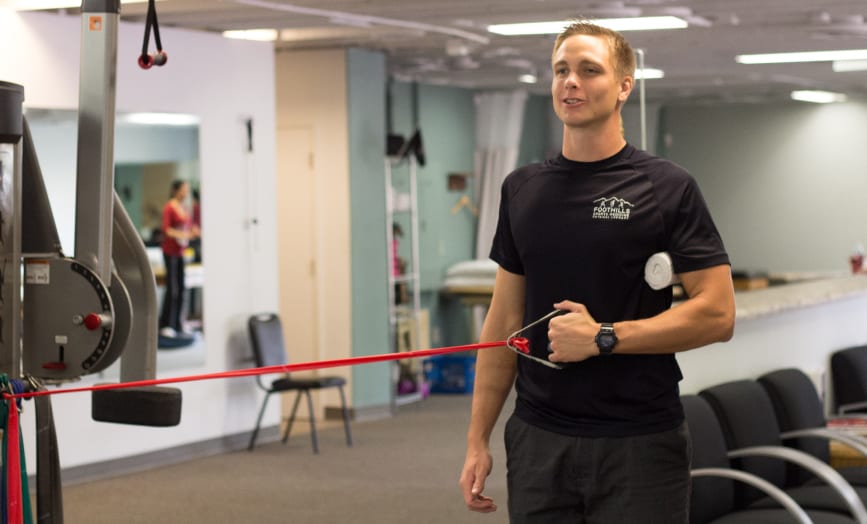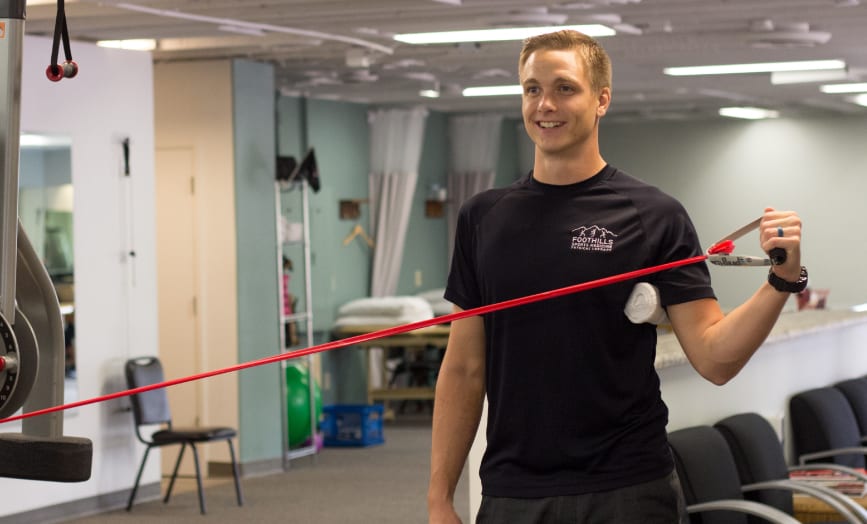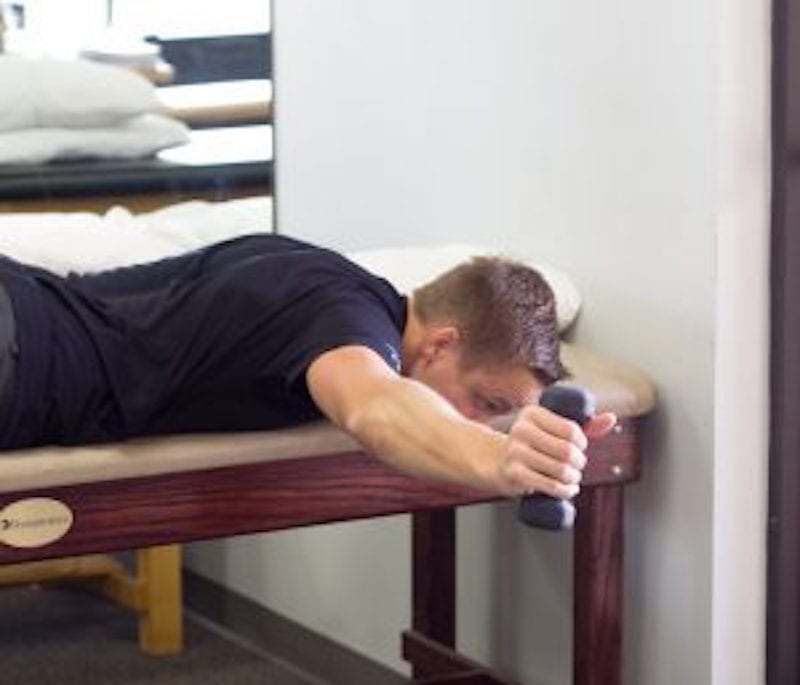Having spent a good deal of time in the gym as a strength and conditioning specialist and physical therapist assistant, I noticed people tend to overlook necessary rotator cuff strengthening exercises in their shoulder workouts. In fact, one of the most commonly overlooked muscle groups targeted in a typical shoulder workout routine is the rotator cuff musculature, which can lead to trouble down the line. In this article, I plan to explain the basic anatomy of the rotator cuff and the importance of incorporating specific exercises into your gym routine to help prevent the onset of shoulder pain.
The rotator cuff consists of four major muscle groups: the supraspinatus, the infraspinatus, the teres minor, and the subscapularis. These four muscles are located beneath the deltoid muscles and originate throughout the shoulder blade, called the scapula, and insert on the front of the shoulder, called the humerus. The major function of this muscle group is to provide a stable junction within the shoulder, the most mobile joint in the body and an unstable ball and socket joint. It is called a ball and socket joint because the head of the humerus, the ball portion of the arm bone, articulates, or connects, to the glenoid fossa, the socket portion of the shoulder blade.
However, in a standard gym routine, most people focus on isolating the deltoid muscles and engaging in deltoid specific shoulder exercises—such as overhead shoulder presses—looking to build larger shoulder muscles. The large deltoid muscles are the ones that turn people’s heads when you are wearing that cut-off shirt at a pool party. Although these muscles are important in shoulder mobility, the rotator cuff musculature is the major muscle group involved in shoulder stability.
Stability within the joint is necessary; it prevents the dislocation of the most unstable joint in the body. The natural instability of the shoulder joint stems from the difference in size between the humerus and the shoulder blade, with the head of the humerus being 2-3 times as large as the socket of the shoulder blade. Picture a golf ball sitting on a golf tee with the golf ball being the head of the humerus and the tee being the socket in the shoulder blade.
Thus, having a weak rotator cuff musculature can significantly increase the incidence of shoulder dislocation due to decreased stability within the joint. When this is combined with an overworked deltoid, it increases the risk of developing a shoulder impingement.
A shoulder impingement occurs when one of the rotator cuff muscle tendons, called the supraspinatus muscle, and its associated lubricating structures become inflamed inside the small space between the collar bone and the shoulder joint, anatomically known as the subacromial space. During a normal overhead shoulder motion, the rotator cuff musculature pulls the head of the humerus into the shoulder socket, maximizing the subacromial space and preventing impingement of the structures. Excessive deltoid activity, on the other hand, elevates the head of the humerus in an upward direction, minimizing the subacromial space, and pinching the soft tissue structures, leading to shoulder pain and potentially a rotator cuff tear.
It is vital to incorporate rotator cuff isolation exercises into your shoulder routine to reduce the incidence of shoulder injuries or pain that can take several months and even up to a year to rehabilitate.
I have included examples of four different rotator cuff strengthening exercises you can incorporate into your gym routine to maximize your shoulder strength without sacrificing shoulder stability. You can complete 3 sets of 10 repetitions of each exercise applying resistance that results in muscle fatigue.
Exercise 1.


Exercise 2.


Exercise 3.


Exercise 4.


References:
- https://learning.hccs.edu/faculty/lori.yuill/danc2325/shoulder-elbow-wrist-and-hand-lectures)
- https://emedicine.medscape.com/article/109130-overview




